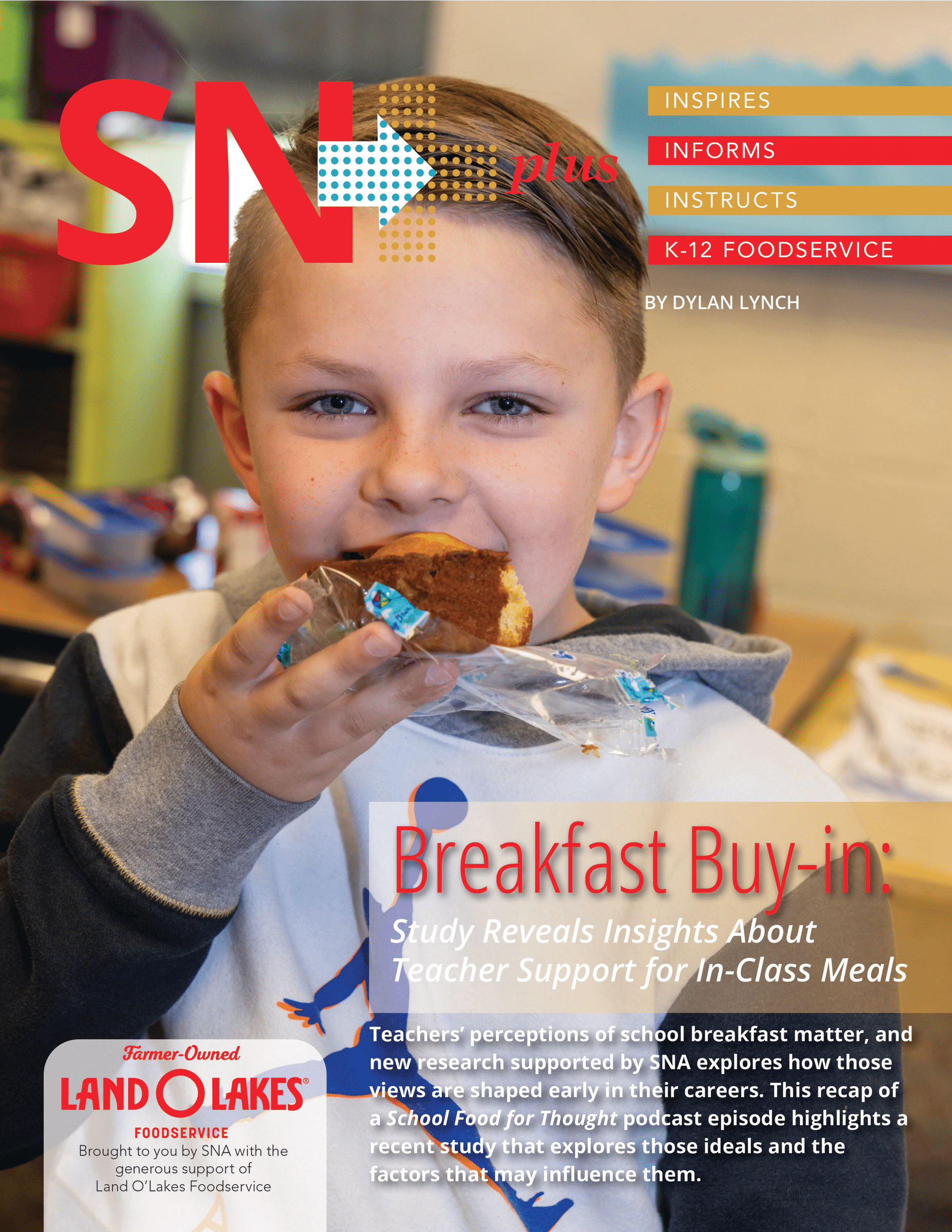Executive Summary
Challenges for School Meal Programs
The top 3 challenges for school meal programs are:
- Increasing costs
- Staff shortages
- Menu item shortages
- 99.8% of respondents indicated increasing costs as a challenge for their school nutrition program.
- As district enrollment increases, so does the percentage of school nutrition programs identifying staff shortages as a significant challenge: 43.4% of districts with fewer than 1,000 total students report staff shortages as a significant challenge, while 79.1% of districts with 25,000 or more total students report staff shortages as a significant challenge.
The top 3 most challenging items to procure:
- Breakfast items (e.g. cereals, granola bars, biscuits, pancakes)
- Entrees (e.g. pizza, burritos, chicken, burgers)
- Snacks (e.g. crackers/chips)
School Meal Reimbursements
- Only around a quarter of respondents report the SY 2022/2023 NSLP/SBP per meal reimbursement rates are sufficient to cover costs of producing a reimbursable meal (breakfast: 27.2%, n = 299; lunch: 24.9%, n = 273). Over half of respondents reported SY 2022/2023 NSLP/SBP were not sufficient to cover the cost of producing a reimbursable meal (breakfast: 54.7%, n = 601; lunch: 56.6%, n = 620).
- 99.2% (n = 1,094) of respondents indicate moderate or serious concern regarding the adequacy of the NSLP/SBP per meal reimbursement rates when the additional Keep Kids Fed Act reimbursements expire at the end of SY 2022/2023. Districts with enrollment of 25,000 or more students report the highest level of serious concern.
Loss of Waiver Allowing Free Meals
- Of the districts that indicated they charge for meals, a majority reported that the loss of the federal pandemic waiver allowing all schools to offer free meals to all students had caused an increase in unpaid meal charges/debt (96.3%, n = 680), concerns/complaints from families (86.8%, n = 610), paperwork/administrative burden (86.5%, n = 610) and stigma for low-income students (66.8%, n = 471).
- 50.0% (n = 614) of responding school nutrition programs are offering free breakfast to all students district-wide, and 39.3% (n = 481) of responding school nutrition programs are offering free lunch to all students district-wide.
Unpaid Meal Debt
- Total accumulated debt for all respondents reporting unpaid meal debt (n = 847) was $19.2 million. Per district debt varies widely, from a low of $15 to $1.7 million.
- The overall reported median unpaid meal debt was $5,164.00 (n = 847). For districts that do not offer free meals to all students, median unpaid meal debt was $6,000 (n = 698).
- 97.9% (697) of programs not offering free meals to all students district-wide reported unpaid meal debt, while only 33.0% (149) of programs offering free meals to all students district-wide reported unpaid meal debt.
- Respondent school nutrition programs in the Midwest (88.1%, n = 247), the Mountain Plains (95.5%, n = 102), and those with lower free and reduced rates (<26%: 87.8%, n = 158; 26 – 50%: 87.5%, n = 343) reported the presence of unpaid meal debt at the highest rates.
Average Daily Participation (ADP)
- Both breakfast and lunch average daily participation (ADP) in Oct. of 2022 were lower than ADP in Oct. 2021. On average, reported breakfast ADP was 10.8% lower in Oct. 2022, as compared to Oct. 2021. Lunch ADP was 5.7% lower in Oct. 2022 as compared to Oct. 2021.
- Programs that offer free meals to all students district-wide reported an increase in ADP for both breakfast (8.9% increase in Oct. 2022 compared to Oct. 2021) and lunch (6.4% increase in Oct. 2022 compared to Oct. 2021). Meanwhile, programs that did not offer free meals to all students district-wide reported lower ADP for both breakfast (23.1% decrease in Oct. 2022 compared to Oct. 2021) and lunch (13.2% decrease).
Updates to School Nutrition Standards
- 97.8% (n = 1,078) of respondents are moderately or seriously concerned regarding the availability of foods that will meet target 1A sodium limits and are well accepted by students.
- 88.4% (n = 972) of respondents are moderately or seriously concerned about a mandate that all grains offered with school meals be whole grain rich is being considered for inclusion in a new proposed rule to update federal school nutrition standards.
- 94.4% (n = 1,020) of respondents are moderately or seriously concerned about new limits on added sugar being considered for inclusion in a new proposed rule to update federal school nutrition standards.
Category
Resource Type
Year Added
2023
Related Resources

Operations, School Lunch Hero Day, SNA Research
SN Plus: Celebrating a School Year of Dedication and the Heroes Behind It
Read More


